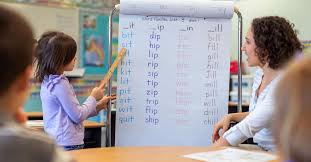

How to teach phonics and ways to teach?
Teaching phonics effectively involves a structured, engaging, and multisensory approach to help children connect letters with their corresponding sounds. Here's a comprehensive guide to teaching phonics:
1. Begin with Systematic and Sequential Instruction
Start by introducing simple, consistent letter-sound relationships. For example, begin with letters like 's', 'a', 't', 'p', 'i', and 'n', which can be combined to form multiple simple words. Once students are familiar with individual sounds, progress to blending them to form words like 'sat', 'pin', and 'tap'. This method, known as synthetic phonics, focuses on teaching students to synthesize or blend individual sounds to read whole words. Research indicates that systematic phonics instruction is more effective than unsystematic approaches or non-phonics instruction.
2. Incorporate Multisensory Activities
Engage students through activities that involve multiple senses to reinforce learning. Techniques such as word chaining, where students change one letter at a time to form new words (e.g., 'cat' to 'bat' to 'bit'), can enhance phonemic awareness. Other activities include using magnetic letters, letter tiles, or interactive games that require students to match sounds with letters. These hands-on experiences help solidify the connection between letters and their sounds.
3. Utilize Engaging Resources and Tools
Incorporate educational tools and resources to make phonics learning enjoyable. Websites like Starfall offer interactive games and activities that teach phonics in a fun and engaging manner. Additionally, phonics-based books and apps can provide students with opportunities to practice reading in context, reinforcing their skills and building confidence.
4. Provide Consistent Practice and Positive Reinforcement
Regular practice is essential for mastering phonics. Encourage daily reading sessions where students can apply their phonics skills to decode new words. Provide positive feedback and celebrate successes to motivate learners. If a student struggles with a particular sound or word, offer additional practice and support to build their confidence and proficiency. By following these strategies, educators and parents can create a supportive and effective phonics learning environment that fosters reading development and literacy skills in children.




 click and follow Indiaherald WhatsApp channel
click and follow Indiaherald WhatsApp channel